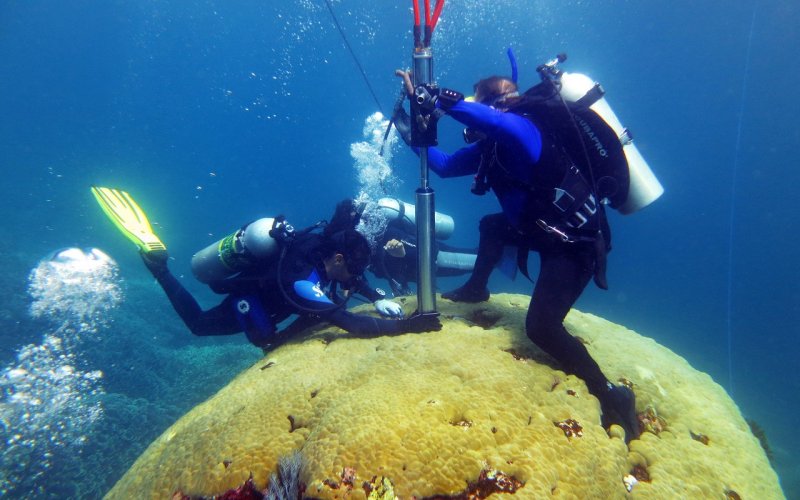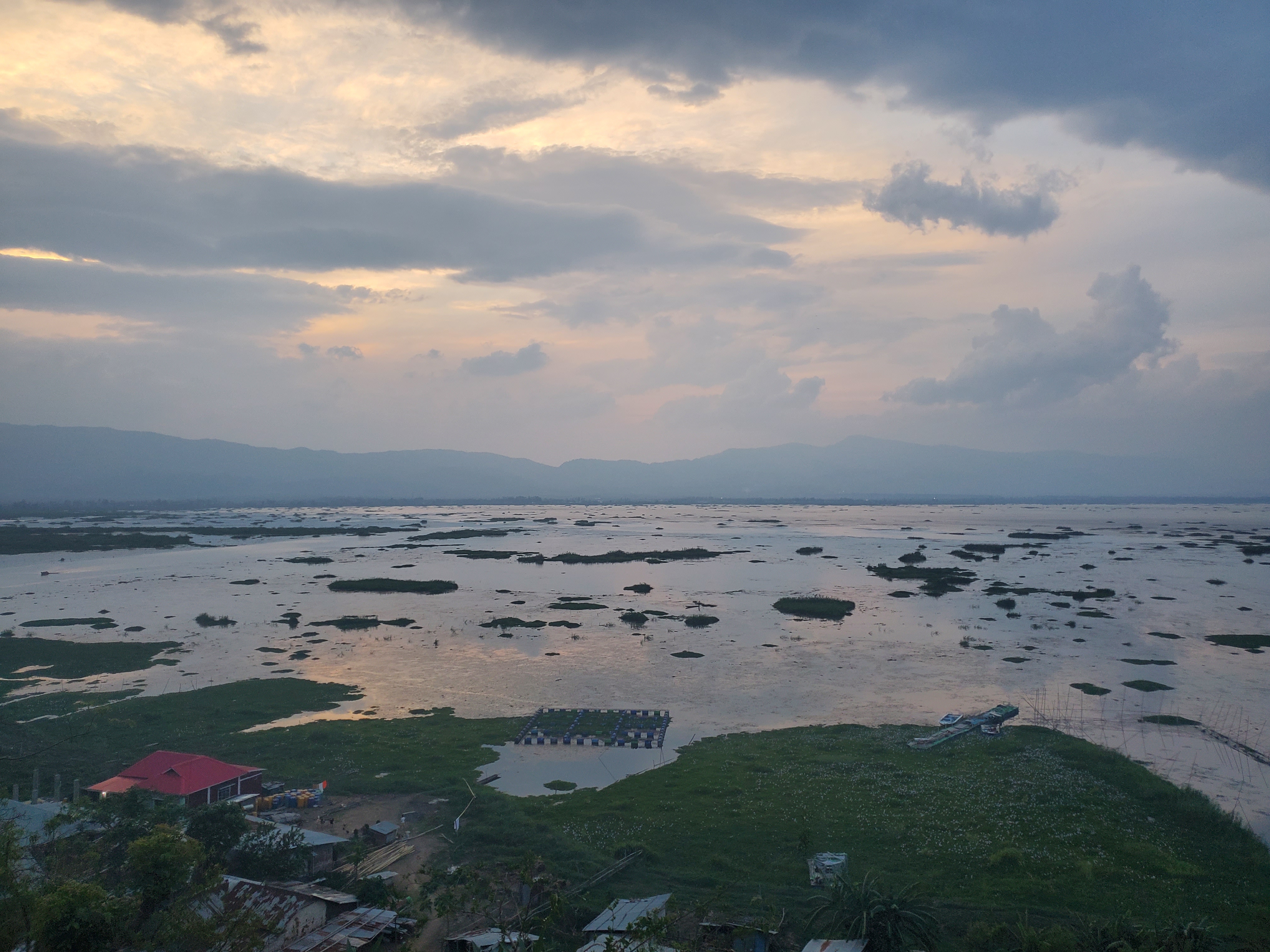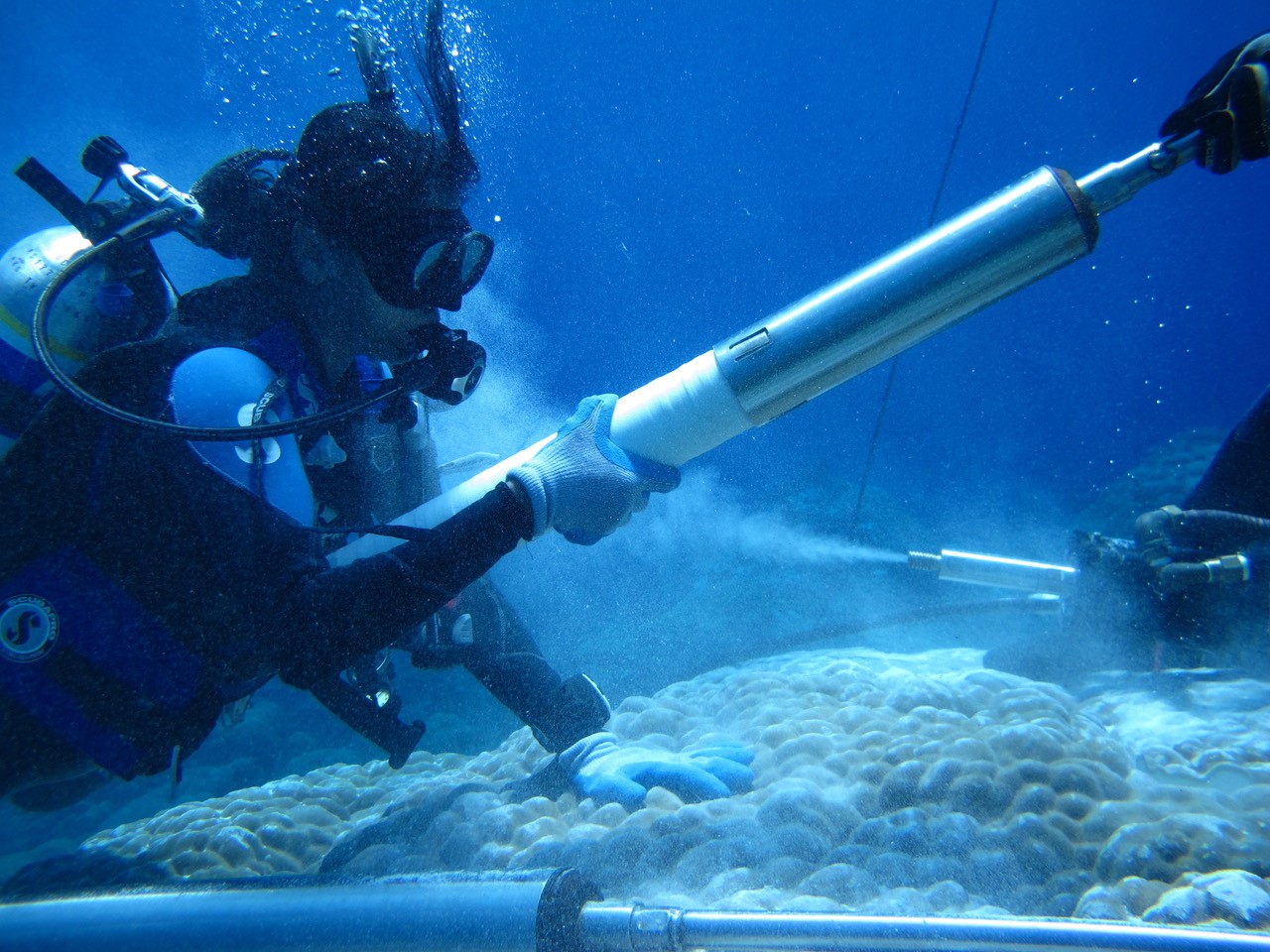Paleoclimate Lab Researchers Use NSF Support to Study Climate Change Past

By Mike Nolan
ALBANY, N.Y. (Aug. 31, 2023) — Last summer, the University at Albany’s Paleoclimate Lab opened its doors at ETEC, offering a new way to analyze samples of natural materials, such as coral and lake sediment, to help reconstruct Earth’s climate history.
Now, through nearly $800,000 in new support from the National Science Foundation (NSF) this summer, lab researchers are focused on South Asia and the Middle East.
Aubrey Hillman, an assistant professor in the Department of Atmospheric and Environmental Sciences (DAES), was awarded $417,242 from the NSF for a collaborative research project to create a 50,000-year continuous record of the Indian summer monsoon by analyzing lake sediment collected from Loktak Lake in Northeast India.
Sujata Murty, a DAES assistant professor, was awarded $339,771 from the NSF to lead another collaborative research project that aims to reconstruct Red Sea surface hydrology since the 1700s by analyzing coral cores along its eastern edge.
Both projects are now active and will run through the summer of 2026.
“The NSF Paleoclimate program is highly competitive; therefore, it is notable that both of these projects were funded,” said Ryan Torn, DAES chair and professor. “Aubrey and Sujata’s work will provide greater insight into Earth’s past climate and offer new research opportunities for both undergraduate and graduate students.”
Changes in the Indian Summer Monsoon
The Indian summer monsoon typically lasts from June to September, with much of India, along with other parts of South Asia, receiving a significant amount of its total annual precipitation during this period.

Hillman’s new NSF project proposes to create new paleoclimate records from Loktak Lake that will provide insight into the causes and consequences of abrupt changes in Indian summer monsoon rainfall over the last 500 centuries.
To do so, Hillman and her research team, which includes collaborators at the University of Pittsburgh, Manipur University in India and Washington University in St. Louis are using the Paleoclimate lab to analyze lake sediments collected through the project.
In 2018, the research team traveled to Loktak Lake to start the collection process, using a UWITEC coring device that lowers a long tube to the bottom of the lake and fills it with sediment cores. That tube is then brought home, preserved and analyzed.
The team plans to return within the next year, collecting a total of 30 meters of lake sediment.

“The lake sediments will offer us new data to analyze changes in the Indian summer monsoon season over tens of thousands of years,” said Hillman. “There are few records that currently exist at this long of a scale.
“We believe our findings will offer new insight into the timing, direction, magnitude, and rate of changes in the Indian monsoon season through history, all of which are important to the more than one billion people who rely on it to deliver water and support agriculture."
Following the sample collections, the research team plans to hold a series of public engagement workshops with colleagues in India regarding topics such as lake water balance, paleoclimate and monsoons. The project is also supporting graduate student researchers from partnering institutions.
Climate of the Red Sea
Our oceans play a critical role in influencing regional and global climate by absorbing much of the solar energy that reaches Earth and releasing heat back into the atmosphere.
While there’s significant research on the climate history of the Atlantic and Pacific Oceans, the Indian Ocean, the third largest of the world’s five modern oceans, is much less understood.

Murty’s NSF research project, which includes collaborators from the Woods Hole Oceanographic Institution and Union College, will focus on analyzing coral samples to determine how climate variability over the last 300 years has impacted ocean circulation in the Red Sea, a marginal sea of the Indian Ocean.
“The Indian Ocean is one of the most under-observed tropical ocean regions in the world,” Murty said. “We do not have a strong understanding of past Indian Ocean climate or ocean circulation patterns, so I’ve been slowly moving my research over to this area, beginning with the marginal seas, such as the Red Sea.
“Our research findings will lead to improved understanding of Red Sea hydrographic variability and interactions with regional climate, aiding in climate and ocean circulation prediction efforts in the region."
Corals have annual growth layers, similar to tree rings, that can offer valuable information on how environmental conditions have changed over time and provide insight for future climate modeling. Oceanographers like Murty scuba dive in the ocean and drill cores from massive boulder corals, taking care not to harm them. The samples for the new research were collected prior to this project and are now in the Paleoclimate Lab.
Along with analyzing the corals, project researchers also plan to participate in art-science outreach initiatives such as Synergy II, a collaborative project between Art League RI and the Woods Hole Oceanographic Institution that offers a unique opportunity to share ocean science research through artistic expression.
The NSF funding also supports graduate and undergraduate students assisting with the coral analysis.




